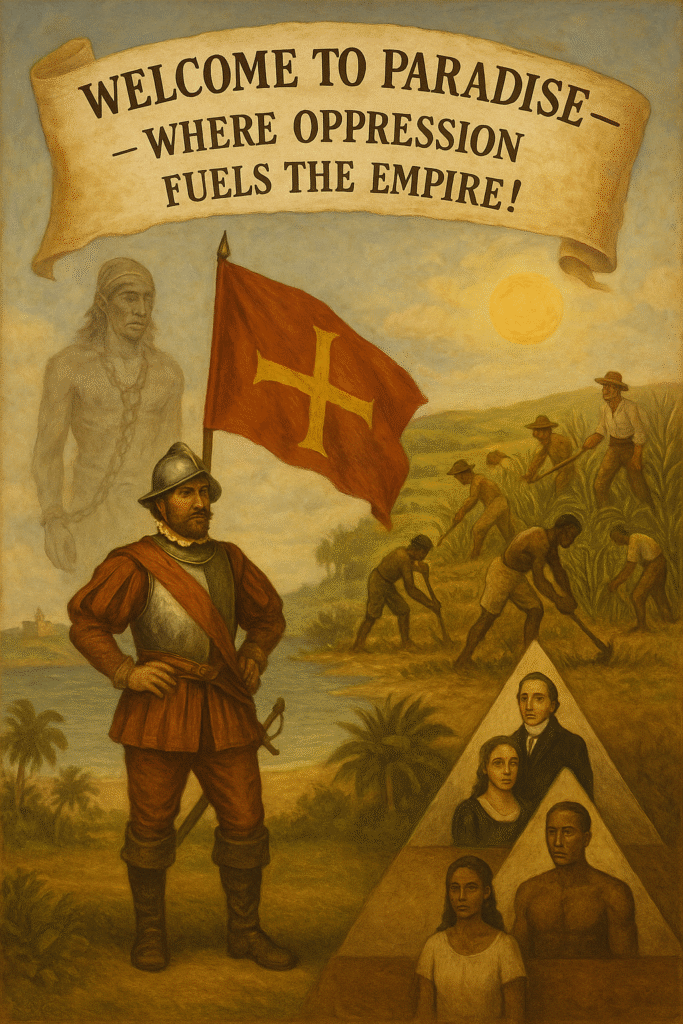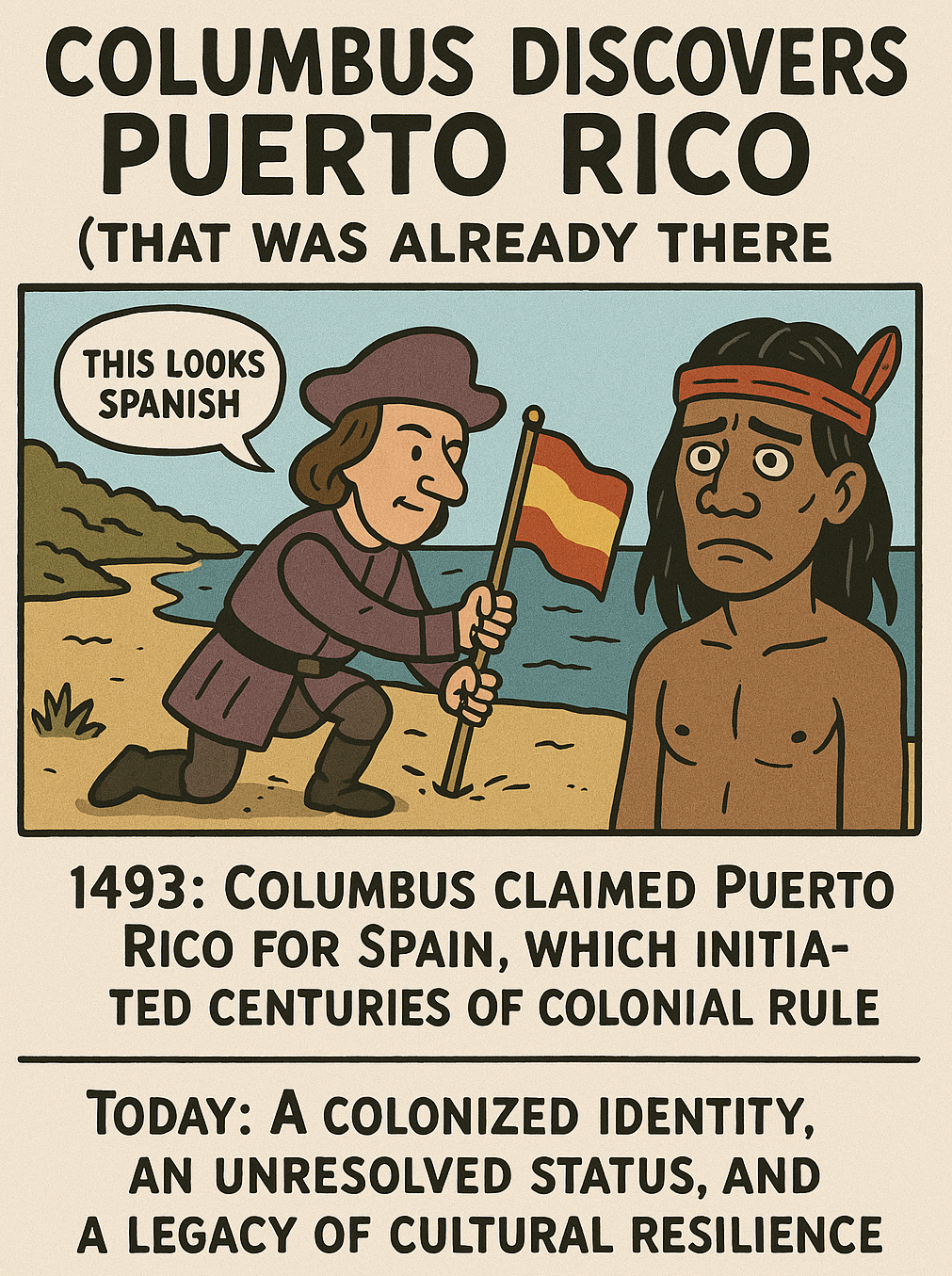
A Caribbean Paradise: Brought to You by Genocide, Slavery, and Colonial Ambition!”
Step right up, ladies and gentlemen, and behold the crown jewel of the Spanish Empire: Puerto Rico! Where the beaches are white, the sugar is sweet, and the human rights violations are absolutely top shelf.

First, let’s give a warm (and smallpox-laden) welcome to our founding guests, the Spanish conquistadors! Armed with the latest in 16th-century moral ambiguity, they introduced the Taíno people to civilization—by which we mean forced labor, public executions, and cultural erasure. Why settle for coexistence when you can have total domination?
Fast forward just a few decades and the labor force is looking a bit… thin. No worries! Spain had a backup plan: import Africans by the boatload! After all, what’s a good plantation economy without unpaid labor, lashings, and a caste system built on skin tone? It’s efficiency and dehumanization, all in one colonial package.
And let’s not forget the crown’s commitment to diversity—of suffering. Whether you were Taíno, African, or a mixed-race colonial subject, Spain had an oppression plan tailored just for you! Want land rights? Not a chance. Self-governance? How adorable. Literacy? Only if it helps you read the Bible while picking sugarcane.
Ah, but history marches on, and eventually Spain began to gracefully consider letting Puerto Ricans participate in government—as long as they were wealthy, white, and remembered who was boss.
So raise your goblets of colonial rum and toast to progress! Just don’t ask who planted the cane, built the cities, or buried their dead in unmarked graves to make it all possible.
“Columbus Discovers Puerto Rico (That Was Already There)”
In a stunning display of navigational arrogance, Christopher Columbus heroically “discovered” the island of Puerto Rico in 1493—an island that inconveniently already had people, culture, agriculture, and a name: Borikén. Naturally, this was an awkward detail, but nothing that a European flag and a healthy dose of entitlement couldn’t fix.

Upon stepping foot on the island, Columbus took one look around and declared, “This looks Spanish.” The native Taíno people, who had been thriving there for centuries, responded with confusion, hospitality, and eventually smallpox.
The Spanish crown, deeply moved by the economic opportunities disguised as Christian duty, immediately sent more ships, more priests, and a generous amount of muskets. Over the next 400 years, Spain graciously shared the benefits of colonization: disease, forced labor, religious conversion, and a complete restructuring of native life. Cultural genocide, but make it imperial.
The Taíno population? Largely wiped out. But don’t worry—they got commemorative statues later!
Fast-forward to today, and the effects of that fateful claim live on in delightful ways:
- A colonized identity still negotiating between pride and erasure.
- A territory status with no voting power in U.S. Congress—wait, that’s the other colonizer.
- An economy that still serves outsiders better than locals.
- And a rich cultural legacy held together by music, resilience, and sheer ancestral spite.
So thank you, Columbus, for sailing the ocean blue—and promptly claiming things that weren’t yours, kicking off centuries of cultural interruption. Truly, a man ahead of his time in not asking for directions, consent, or consequences.
